A guest post by Yvonne Altman O'Connor of the Irish Jewish Museum
Tracing Jewish ancestors has unique challenges and many rewards. In this short blog, I will try to give you an idea of what is involved.
What’s in a name?
It all begins with the name of your known family relative. For centuries Jews were given only a Hebrew religious first name (sometimes two) and were known by their father’s given name e.g. Yaacov Shimon Ben Aharon, (Jacob Simon son of Aaron). Most often, there was also a local name which in much of Europe was Yiddish so Yaacov Shimon would be called Yankel Shimmel. To his family, he may be known simply as “Shimmy” but when he uses his name in the wider secular world, he will adopt a locally-acceptable version of his name like “Jakob”. The same man when he emigrates may be simply “Jack”. Different versions of the name will show up in various records so the researcher must keep all possibilities (and spellings) in mind when going through documents. There is a definite naming pattern in family names which helps matters considerably. A new born son or daughter will be named after a recently deceased relative and the same names will be repeated often throughout the generations.
By the early nineteenth century, Jews in Europe were forced to take on formal surnames for official matters (usually taxes and military service). These names were often related to their home place or occupation. Many completely unrelated families took the same name and individual family members could be given different surnames. It was not until the 1840’s that Russian Jews had to register these names, so although very important, the surname is of limited value in tracing back beyond the early 1800’s in many cases. Take into consideration also, the well-documented accounts of name changes at ports of entry upon emigration when officials could not understand or spell the immigrant’s surname and in the many case where families chose to shorten, simplify or translate their name to make it fit in better with the new country or possibly to disguise their Jewishness, and you have an idea of how complex the question of a name can be.
The longer a family has been in the new country, the greater the chance that some family member may have intermarried. This create specific problems as it heralds a break with their Jewish records and traditionally, with their family too. So, descendants of this person will find it quite difficult to learn about their family history as often this will be forgotten or completely hidden. It is quite astonishing how many people were lost to their history in this way going right back to very early immigration into the U.K. The consequence is of course that many families discover they have Jewish roots without ever suspecting such!
Finding the place of origin
Finding the home place, the Shtetl or village your family originated from is of paramount importance. Not only does it give you a chance to unearth whatever records, (civil or religious) which may be in existence in relation to your family, there will be several sources of general information on the history of this shtetl available. As borders kept changing in Europe, your ancestor’s home place may be in a different country today from where they stated they were from. If there is a naturalisation record to be found, this will help considerably in identifying the birthplace. Finding a gravestone is of enormous help but as we know, much of the memory of Jews throughout Europe has been decimated. For families affected by the Holocaust, there are exceptional difficulties. Many survivors were reluctant to speak about their past preferring to create new lives after the anquish and loss they suffered. They carried few, if any, records and whole Jewish communities were annihilated. However, thanks to the continuous research and work of many institutions and individuals who are piecing together lost records in memory of the victims of the Shoah, many people can find something out about their lost family members.
Putting it all together
Behind each ancestor’s name is a unique story. Some families struggle greatly just to find the name, but once they do, the journey unfolds. Sourcing the documents and creating the links that go with the documents, build that story so a precious life, no matter how long forgotten or lost can be reclaimed and held in memory forever. When a Jewish person dies, it is said “May their memory be for a Blessing”.
Yvonne Altman O'Connor is an independent writer and researcher specialising in Irish and Jewish history. Her work focuses on creating the unique story that lies behind each person's life in their time in history

